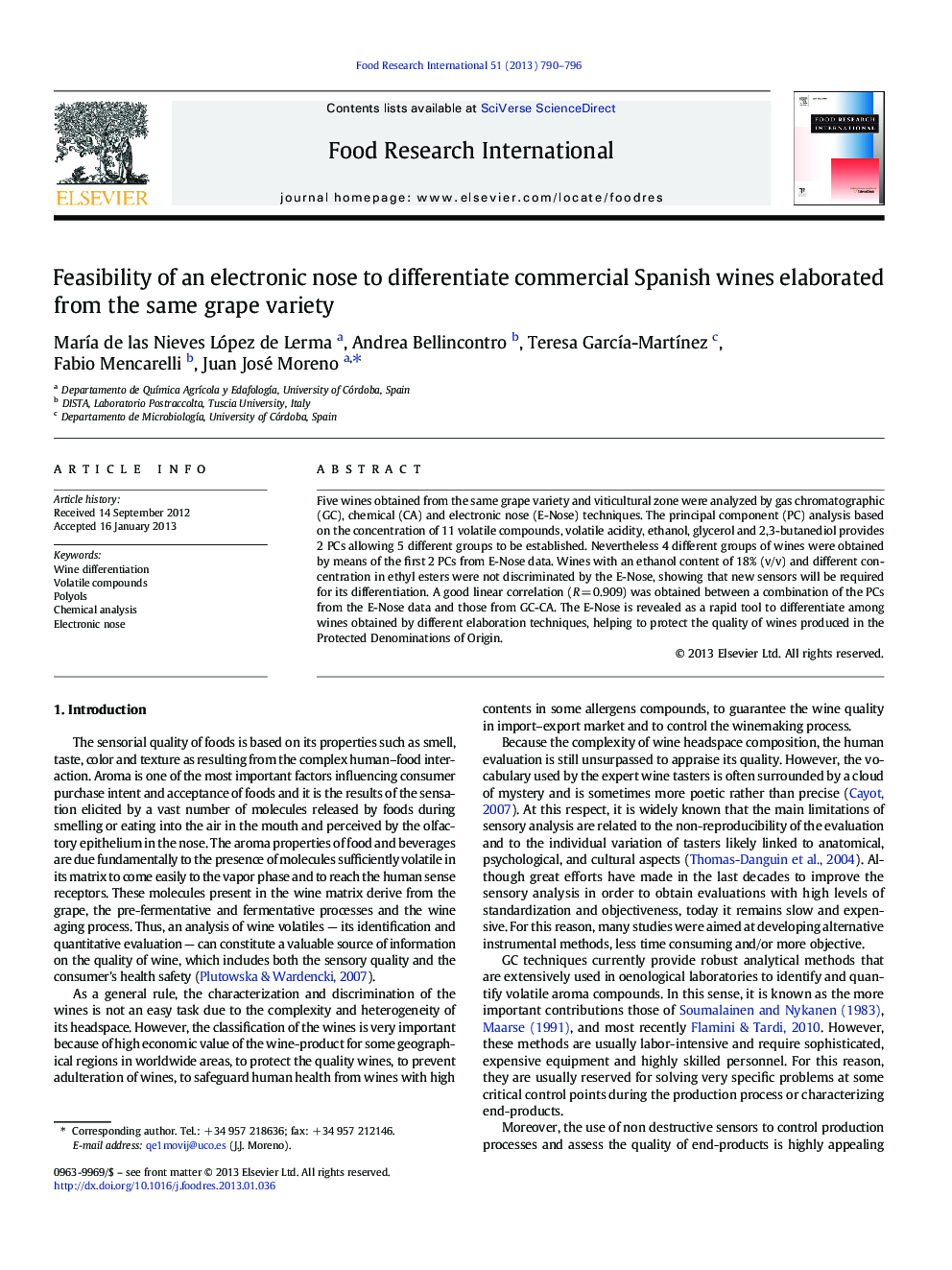| Article ID | Journal | Published Year | Pages | File Type |
|---|---|---|---|---|
| 6398084 | Food Research International | 2013 | 7 Pages |
Five wines obtained from the same grape variety and viticultural zone were analyzed by gas chromatographic (GC), chemical (CA) and electronic nose (E-Nose) techniques. The principal component (PC) analysis based on the concentration of 11 volatile compounds, volatile acidity, ethanol, glycerol and 2,3-butanediol provides 2 PCs allowing 5 different groups to be established. Nevertheless 4 different groups of wines were obtained by means of the first 2 PCs from E-Nose data. Wines with an ethanol content of 18% (v/v) and different concentration in ethyl esters were not discriminated by the E-Nose, showing that new sensors will be required for its differentiation. A good linear correlation (RÂ =Â 0.909) was obtained between a combination of the PCs from the E-Nose data and those from GC-CA. The E-Nose is revealed as a rapid tool to differentiate among wines obtained by different elaboration techniques, helping to protect the quality of wines produced in the Protected Denominations of Origin.
⺠Five wine types were differentiated using their composition in major wine-volatiles. ⺠Only 4 groups for the 5 wine types were differentiated by the electronic nose. ⺠The electronic nose cannot differentiate wines with similar sensorial characteristics. ⺠A linear relation between composition in wine-volatiles and E-Nose was established. ⺠E-Nose is a powerful tool for the classification of commercial sherry type wines.
